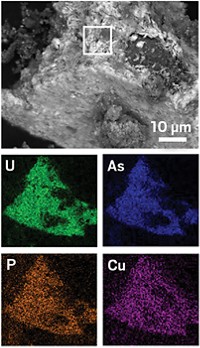Advertisement
Grab your lab coat. Let's get started
Welcome!
Welcome!
Create an account below to get 6 C&EN articles per month, receive newsletters and more - all free.
It seems this is your first time logging in online. Please enter the following information to continue.
As an ACS member you automatically get access to this site. All we need is few more details to create your reading experience.
Not you? Sign in with a different account.
Not you? Sign in with a different account.
ERROR 1
ERROR 1
ERROR 2
ERROR 2
ERROR 2
ERROR 2
ERROR 2
Password and Confirm password must match.
If you have an ACS member number, please enter it here so we can link this account to your membership. (optional)
ERROR 2
ACS values your privacy. By submitting your information, you are gaining access to C&EN and subscribing to our weekly newsletter. We use the information you provide to make your reading experience better, and we will never sell your data to third party members.
Environment
ACS Meeting News: Tiny iron particles pose new concern for drinking water
by Matt Davenport
August 24, 2016

When it comes to drinking water, where there’s lead, there’s usually iron. Researchers have established a correlation between the two metal contaminants but lack a clear understanding of how iron influences the release of toxic lead from pipes into water.
And that relationship may be more complex than water experts anticipated, according to Graham Gagnon, director of the Center for Water Resources Studies at Dalhousie University. Iron mineral nanoparticles may play a hitherto unconsidered role in helping lead leach into tap water, Gagnon said Wednesday morning at the American Chemical Society national meeting in Philadelphia.
Researchers who study drinking water currently consider metals in two forms: dissolved or particulate, which means metallic bits larger than about 450 nm, Gagnon explained in a session sponsored by the Division of Colloid & Surface Chemistry.
Colloidal nanoparticles don’t fit squarely into either category. Yet these particles, which are roughly 10 nm in diameter, accounted for more than 30% of the lead content in simulated drinking water samples analyzed by Gagnon and his colleague, Benjamin F. Trueman.
The team analyzed water from a model pipeline system representing a common construction in North America, where cast iron main pipelines carry water over long distances. Shorter lead distribution lines then connect the main to residences and businesses.
Although the model system fit on a benchtop, the duo built and operated it using authentic materials and practices. The researchers collected water that spent months in their system and used a combination of size exclusion chromatography and inductively-coupled mass spectrometry to reveal nanoscopic iron minerals, including goethite and magnetite (Environ. Sci. Technol. 2016, DOI: 10.1021/acs.est.6b01153).
It remains unclear exactly how the iron particles and lead pipes interact, but Gagnon posited that the nanoparticles release lead electrochemically and absorb it.
Now that researchers know the nanoparticles are in water, they can start asking more specific questions about them, said Irina Chernyshova, a physical chemist in the environmental engineering department at Columbia University. For instance, scientists can now examine iron particle-lead pipe interactions, considering variables such as a water’s pH and salinity, along with nanoparticle size and geometry.
For his part, Gagnon is interested in exploring how corrosion inhibitors for pipes, primarily orthophosphate, affect the nanoparticles. That understanding could help better protect people as long as lead pipes remain in water systems, he said.
More Related Stories:





Join the conversation
Contact the reporter
Submit a Letter to the Editor for publication
Engage with us on Twitter